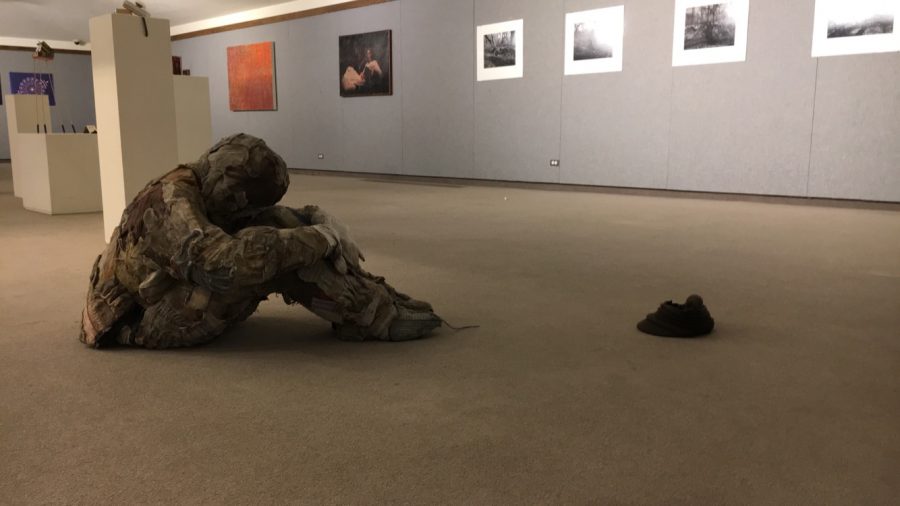Art Show Gives Faculty a Chance to Shine
Walking into the exhibition of artwork held proudly on display, I happened to find a quote from Lyle J. Salmi. It said, “Within each of us exist the opportunity […] to catch a glimpse of something previously not seen. […] It is in these instances that we may realize the limitations of language as a way to describe certain experiences. This is why I paint.” If that doesn’t describe art than I don’t know what does.
Most of the work that was featured not only came from Salmi, but it also featured works from Jamie Kotewen, Jessa Wilcoxen, Johnny Power, Ed Walker, Jim Schietinger, and John Hansen. Digital prints, oil paintings, oil pastels, photography, and sculptures stood proudly on display.
Jessa Wilcoxen’s pink, lavender, purple, and silver kaleidoscope artistry is quite a remarkable sight. Right next to the art was a description on how people could view the word, “blessed.” It spoke to me specifically because it reminded me of my own mother. Not only did she go through breast cancer and beat it, but purple is also her favorite color. I could see my mother looking at those designs and maybe wanting to try on a shirt or two, especially the fourth design.
Johnny Power’s work is an eclectic arrangement of thought and focus, or lack thereof, depending how you look at it. “Burden of Truth” and “Mystery of Birth” have a couple of things in common: they’re both abstract, like something from Salvador Dali or Terry Gilliam, they give the indication that discord rules the world, and they’re both barely comprehensible, which some could argue give those pieces a deeper meaning.
But what really stands out with Power’s work is the photographs. They look so candid, dark, and disillusioned. Each photo could tell its own story or highlight the life of what could have been versus what they have now.
Ed Walker’s sculptures are made from the two things that seem to be his constant muse: nostalgia and technology. A vintage Marvel marble box holding a disc is my childhood in a nutshell: combining some old cartoons with some newly developed CDs. It was also cool to see the Peace Love & Posters artifacts on display. It adds to something of a bygone era tone of his work.
Mentioning of which, the most understandable pieces of artwork on display at Kirkland has to be John Hansen’s sculptures “Inertia” and “Worn Out.”
“Inertia” depicts the need to break free from some copper ball prison. It’s a need to emerge from cluttered junk, and it’s fascinating to watch. But even that couldn’t compare with his other statue on display.
“Worn Out’s” foundation is burdened from a long, prolonged period of hard work encompassed by worn out gloves and paper maché. One look at this statue and someone could easily identify with it in some way or another. It looks, for a lack of a better pair of terms, worn out.
And as a final epitaph to this story, when I was seeing the Millikin wind ensemble concert, I accidentally left my hat a couple of feet away from the “Worn Out” statue. Little did I know was I stumbled upon a happy accident of artistic inspiration. I ended up giving the statue a somewhat different meaning. Now when I look at the statue, I imagine someone who could’ve had a life of adventure but couldn’t afford it and now feels stuck. Or he could be mourning a loved one, and that hat was the only piece of memorabilia to remember that person by.
Part of me wanted to leave my hat where it was, but I knew it wasn’t really supposed to be there to begin with. Instead, I decided to take a photograph for the scrapbook. And it serves as a reminder of the beauty that art could provide for people: an opportunity to think or see what they never thought they wanted to witness.

